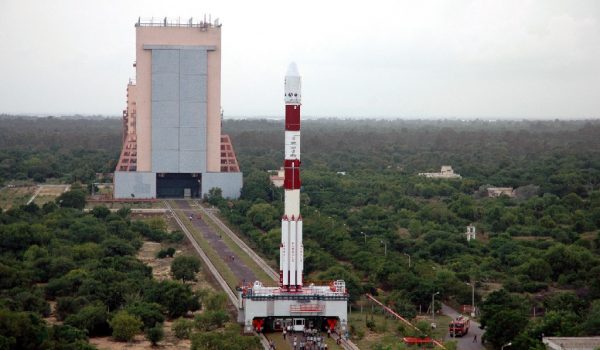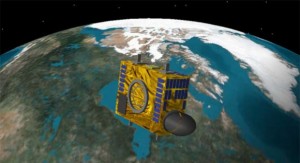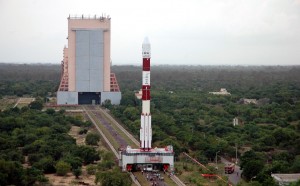
India announced last week that they have planned a mission to Mars in 2013 and are to launch an Indian PSLV rocket containing 7 satellites to study the night sky, on February 25.
“The space program epitomizes India’s scientific achievements and benefits the country in a number of areas” said President Pranab Mukherjee. “Several space missions are planned for 2013, including India’s first mission to Mars and the launch of its first navigational satellite”.
India, after having placed a probe on the Moon and planned its first manned mission for 2016, have scheduled an unmanned Mars Orbiter, to launch in October 2013. The spacecraft will undertake a 300-day journey to collect data about Martian climate and geology. The total cost of the mission to Mars will be $70 million. India will join U.S., Russia, Japan and China in the growing club of countries that have sent probes to Mars.

NEOSSat will look at Atira class asteroids and it will also track satellites and space debris (Credits: CSA).
The PSLV launch will send a swarm of satellites including the Canadian CanX-3 BRITE and the first Austrian satellite TUGSat-1 BRITE. They will be the smallest astronomical telescopes in orbit, measuring just 20 centimetres wide and with less than 7 kilograms of mass. The other satellites are NEOSSat, Sapphire, SARAL, AAUSat 3 and STRaND-1.
Near-Earth Object Surveillance Satellite (NEOSSat) is a small asteroid-hunting telescope, built by the Canadian Space Agency. The spacecraft will focus on Atira class asteroids, which will determine their size and distribution. The mission will be split into 2 separate phases; half of the time the telescope will be monitoring for asteroids that may cross Earth’s path, while the rest of its time will be devoted to observing satellites and space debris in orbit, to enable better tracking of their movements. The Canadian military mission Sapphire will keep track of objects orbiting between 6,000 and 40,000 kilometres from Earth.
The Indo-French spacecraft SARAL, the largest satellite of the fleet will take measurement of water and ice to provide extra data for the climate change databases. The Danish AAUSat 3 is intended to test Automatic Identification of Ships technology by tracking vessels equipped with a beacon designed to send information about cargo and destination. Finally, STRaND-1 will be the first smartphone-operated satellite. Amongst its payload will be a system broadcasting the sound of a human scream, to epitomise the phrase “in space, no one can hear you scream” , made popular by Ridley Scott’s 1979 film “Alien”.
PSLV is scheduled for an early morning blast-off from the spaceport at Sriharikota, 110 km from Chennai.
Below, STRaND-1, the first satellite mounting a smartphone.
[youtube http://www.youtube.com/watch?v=D3-iPso6Zy4]


















































































































![A trajectory analysis that used a computational fluid dynamics approach to determine the likely position and velocity histories of the foam (Credits: NASA Ref [1] p61).](http://www.spacesafetymagazine.com/wp-content/uploads/2014/05/fluid-dynamics-trajectory-analysis-50x50.jpg)



Leave a Reply